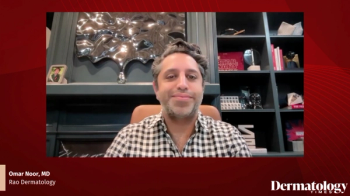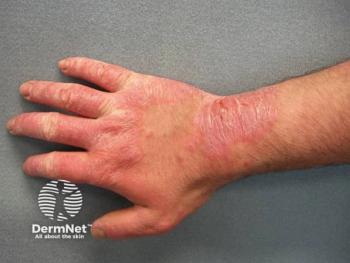
- Dermatology Times, July 2025 (Vol. 46. No. 07)
- Volume 46
- Issue 07
Fall Clinical PA/NP 2025: PAs and NPs Take Control of Their Future
Key Takeaways
- The conference emphasized the importance of staying updated with dermatologic innovations and integrating new therapies for conditions like atopic dermatitis and psoriasis.
- Business acumen, including understanding practice metrics and negotiation skills, was highlighted as essential for navigating the evolving healthcare landscape.
The 2025 Fall Clinical Dermatology Conference energized PAs and NPs with innovative strategies, addressing burnout, digital branding, and personalized medicine.
At the 2025 Fall Clinical Dermatology Conference for PAs and NPs in Orlando, Florida, held from May 30 to June 1, the energy was electric, the sessions dynamic, and the mission clear: Empower dermatology physician assistants (PAs) and nurse practitioners (NPs) with education, advocacy, and evolving clinical strategies. Through keynote talks, workshops, and impassioned personal narratives, attendees were immersed in everything from practice economics to up-and-coming therapeutics. This year’s conference didn’t just inform, it reignited a professional identity rooted in patient-centered care, innovation, and community. For PAs and NPs, this conference shared important pearls on practice management, measuring metrics, and building your brand in the digital age.
Reigniting Passion Through Education and Connection
“I’m very passionate about education, and I love what I do. I love going to conferences and contributing to educational efforts,” Jamie Restivo, MPAS, PA-C, said in a recent interview with Dermatology Times ahead of the meeting. Restivo captured the unspoken sentiment echoed throughout the conference: a deep appreciation for the opportunity to learn from experts, reconnect with peers, and bring actionable insights back to clinical settings.
She emphasized the conference’s unique role in keeping clinicians at the forefront of dermatologic innovation. “If you’re not going to the meetings, you’re really missing out…. If you’re not there and you’re prescribing antiquated medications, you’re really not practicing at your full capability.” As new therapies for atopic dermatitis, psoriasis, and alopecia emerge rapidly, Restivo emphasized that staying current isn’t optional—it’s essential.
Understanding Practice Metrics and Value
Several sessions focused on empowering clinicians with business acumen—vital in an era where private equity, rising costs, and reimbursement challenges are redefining the practice landscape. Metrics expert Kasey D’Amato, PA-C, explained how to track meaningful performance indicators in clinical environments. These included understanding cost-to-acquire-patient ratios, visit frequency per patient, and revenue by insurance code. “Every single patient gets a follow-up,” she noted, calling patient retention “game-changing” for building a practice’s sustainability and negotiating power.
In her “Beyond the Salary” session, D’Amato also tackled a topic often left unspoken—negotiation. “Negotiation in salary or business is really all about mindset,” she said. “Confidence is not the same as arrogance and entitlement.” She emphasized data over emotion, urging PAs to present their collections, contributions, and creative value, whether clinical or non–revenue generating, when asking for changes in compensation or contract terms.
Addressing Burnout, Building Resilience
Burnout was a recurring theme across multiple sessions. As Restivo put it, “Clinicians are getting burned out, and we’re seeing…a mass exodus of clinicians from medicine.” Rising operational costs and stagnant reimbursements are pushing clinicians to see more patients in less time, threatening both care quality and provider well-being.
The challenge, said speakers, is to find systems-based solutions. This includes using technology to reduce documentation burden, training support staff more efficiently, and carving out time for wellness. “You need to see where there are deficits, and where we can do better,” Restivo urged, highlighting topics such as burnout and practice inefficiency that go beyond therapeutics yet directly impact outcomes.
The New Frontier: Digital Identity and Social Media
In a standout session on digital branding, Heather Gates, PA-C, candidly addressed a modern reality: “77% of people…are looking online before they make their doctor’s appointment.” For dermatology PAs and NPs, this represents a challenge and an opportunity.
“Derm has become sensationalized on social media,” Gates said, referring to the growing presence of skin influencers often without medical credentials. “We cannot let these people out there without degrees give people skin care advice that is straight up wild.” Gates says that Instagram and TikTok, when used ethically and strategically, can build trust, demonstrate expertise, and even attract new patients or collaborations.
Gates suggested posting before-and-after photos, breaking down new research, and even creating short-form summaries of journal articles as practical tips. But the message was clear: “You don’t have to have a quarter of a million followers to be successful on Instagram…. You want to find your niche, who you want to follow you.” Throughout the talk, she emphasized consistency, authenticity, and compliance (especially with the Health Insurance Portability and Accountability Act).
Integrating Innovation and AI—With Caution
Artificial intelligence (AI) tools such as ChatGPT were enthusiastically discussed. The platform was praised for its ability to draft patient education handouts, optimize resumes, and prepare for interviews. “ChatGPT is magical,” Gates said. “But you have to remember this is not a replacement for your clinical knowledge…. This is just a tool.”
This emphasis on balance, between leveraging tech and honoring human judgment, was a recurring theme. Whether streamlining documentation or designing social media content, AI can assist but never replace the critical thinking and empathy central to patient care.
Personalized Medicine: The Future Is Now
Restivo also touched on the evolution of personalized dermatologic care: “If we can tape strip someone and say, ‘Hey, your process is IL-4, IL-13 driven,’…we’re going to be able to really hit the nail on the head the first time.” From molecular testing to more nuanced decision-making, the field is advancing from trial and error to precision-based prescribing particularly in chronic inflammatory conditions such as atopic dermatitis and psoriasis.
Still, challenges remain. “We have options; we kind of throw the kitchen sink at these diseases,” Restivo said of conditions such as lichen planus and frontal fibrosing alopecia. “We’re not paralleling the heights that we’ve reached in some of these other disease states.”
Looking Ahead
The 2025 Fall Clinical Dermatology Conference for PAs and NPs was more than a professional gathering—it was a call to action. With insight into clinical innovation, business intelligence, digital branding, and personal well-being, attendees walked away not just more informed, but more empowered.
As Restivo said, “It’s a fun time. I think the future is bright…but there’s still a lot of work left to be done.”
Articles in this issue
5 months ago
Dermatology Times July 2025 Print Recap5 months ago
Is AI Transforming Skin Care?5 months ago
The Value of RAD, According to Clinicians5 months ago
A New Canvas for Conversations in DermatologyNewsletter
Like what you’re reading? Subscribe to Dermatology Times for weekly updates on therapies, innovations, and real-world practice tips.



















